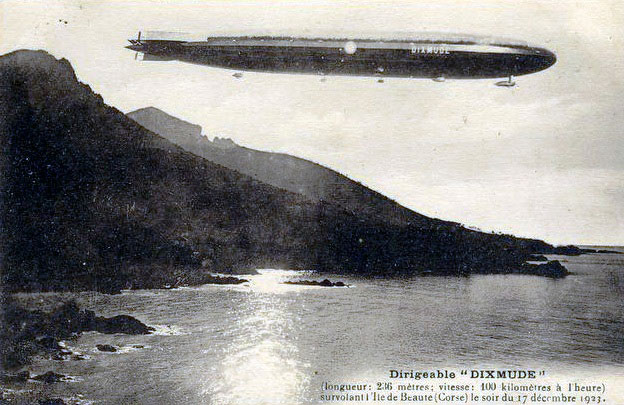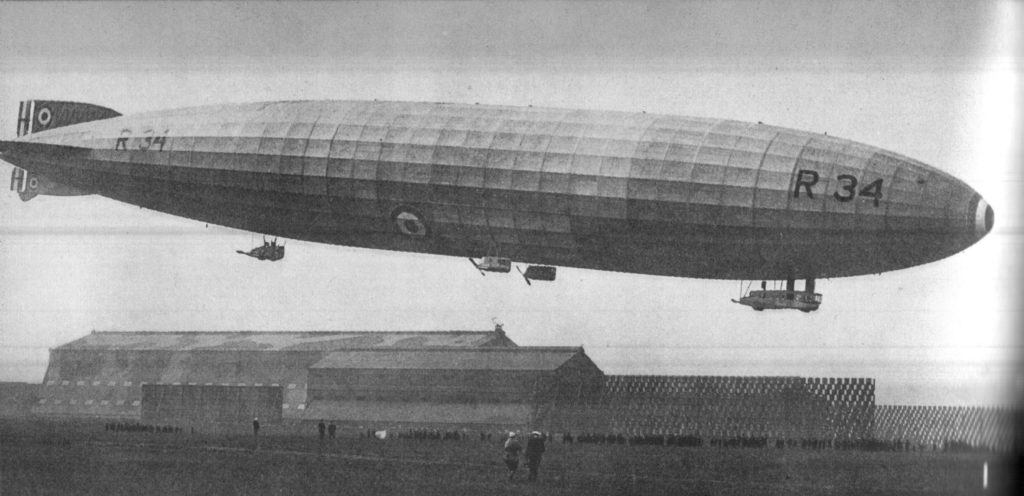The LZ-114 completed after WW I, turned over to the French, and renamed Dixmude.
Many of you are aware of my love affair with the airship and the rigid airship in particular.
Some of you have made comments on the seeming dearth of information on the airship. Well, Virginia, I’m here to tell you that isn’t necessarily so. There’s quite a bit of material out there. One just needs to know where to look.
To that end, I thought I’d share with you today the portion of my library dedicated to books about airships. Because inquiring minds want to know! The list below is divided into non-fiction and fiction.
If you have any additions, please let me know. Questions and comments are always welcome. Until next time, happy reading!
My Airship Library
Non-Fiction
- Airship: The Story of R.34 – Patrick Abbott
- Airships: Designed for Greatness – Gregory Alegi, et.al.; concept and artwork by Max Pinucci
- USS Los Angeles: The Navy’s Venerable Airship and Aviation Technology – William F. Althoff
- Airship on a Shoestring – John Anderson
- Hindenburg: An Illustrated History – Rick Archbold (text) & Ken Marschall (illus.)
- Dr. Eckener’s Dream Machine: The Great Zeppelin and the Dawn of Air Travel – Douglas Botting
- The Giant Airships – Douglas Botting
- TransAtlantic Airships: An Illustrated History – John Christopher
- The Zeppelin Story – John Christopher
- Zeppelins of World War I – Wilbur Cross
- Zeppelin Hindenburg – Dan Grossman
- Airships in Peace and War – R. P. Hearne
- The Zeppelin Reader: Stories, Poems, and Songs from the Age of Airships – Robert Hedin
- The Log of H.M.A. R34 Journey to America and Back – E.M. Maitland
- Inside the Hindenburg – Mireille Major (text) & Ken Marschall (illus.)
- The Hindenburg – Michael M Mooney
- Giants in the Sky: A History of the Rigid Airship – Douglas H Robinson
- LZ129 Hindenburg – Douglas H. Robinson, with scale drawings by Richard Groh
- My Airships – Alberto Santos-Dumont
- Schütte-Lanz Airship Design – Prof. Johann Schütte
- Slide Rule – Nevil Shute
- The Great Dirigibles: Their Triumphs and Disasters – John Toland
- Airship Saga: The history of airships seen through the eyes of the men who designed, built, and flew them – Lord Ventry & Eugene M. Koleśnik
- Jane’s Pocket Book of Airship, ed. by Lord Ventry & Eugene Kolesnik
- Zeppelin: The Story of a Great Achievement – Henry Vissering
- Airship Aerodynamics Technical Manual – War Department
- “Zeppelin’s New Age of Air Travel” in Popular Mechanics, July 1994
- “Blimps: Billboards in the Sky” in Smithsonian, June 1998
Fiction
- Airship Nine – Thomas H. Block
- With Airship and Submarine – Harry Collingwood
- Seize the Wind – John Gordon Davis
- Lester Dent’s Zeppelin Tales – Lester Dent
- Death on the Empress – Stuart Harper
- Goliath – Richard Turner
- Beyond the Rails – Jack Tyler
- Wings of Fury – R.N. Vick
My Own Novels
- The Moscow Affair (From the Files of Lady Dru Drummond, Bk 1)
- The Golden Fleece Affair (From the Files of Lady Dru Drummond, Bk 2)
- Take to the Sky (The Rocheport Saga, Bk 7 – forthcoming)
- Rand Hart and the Pajama Putsch

